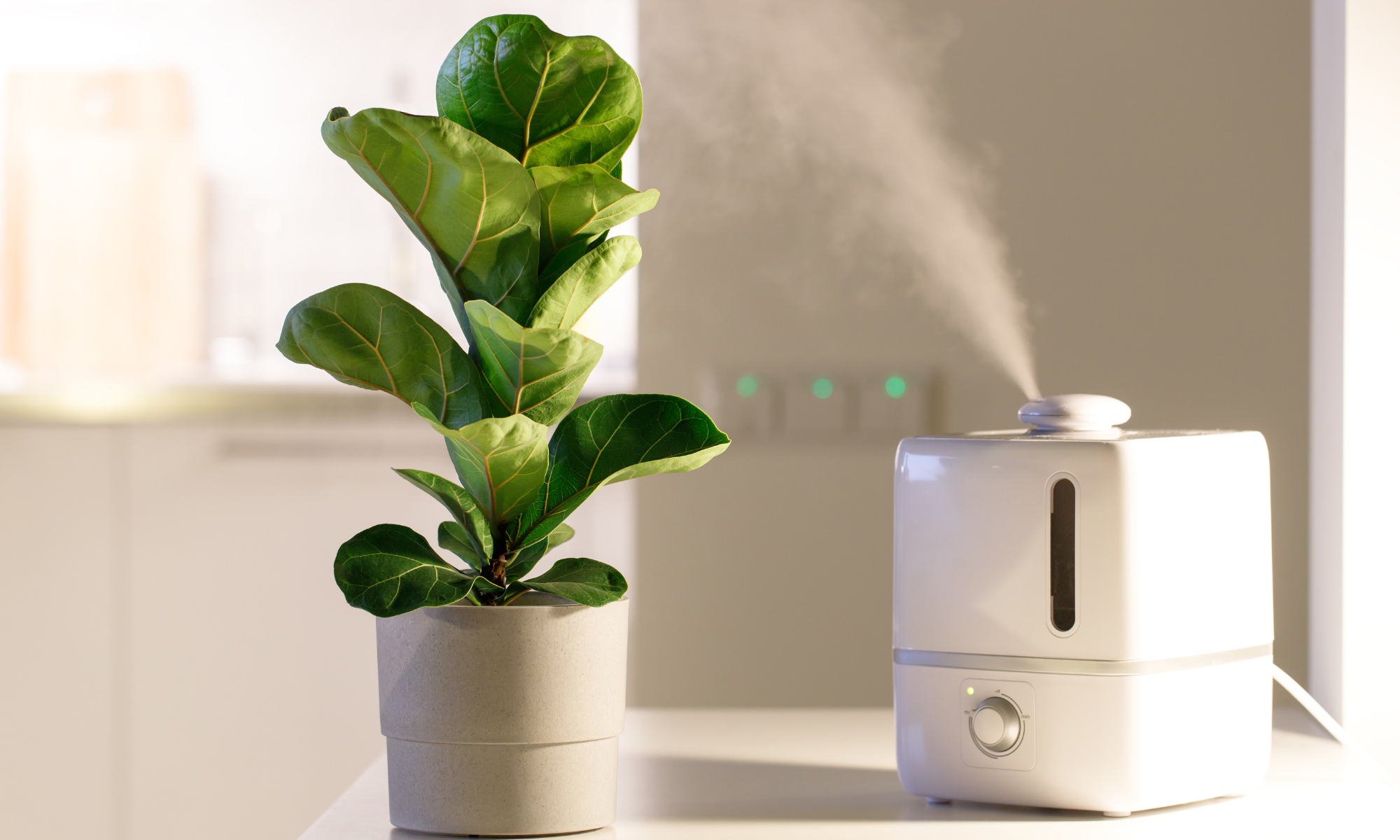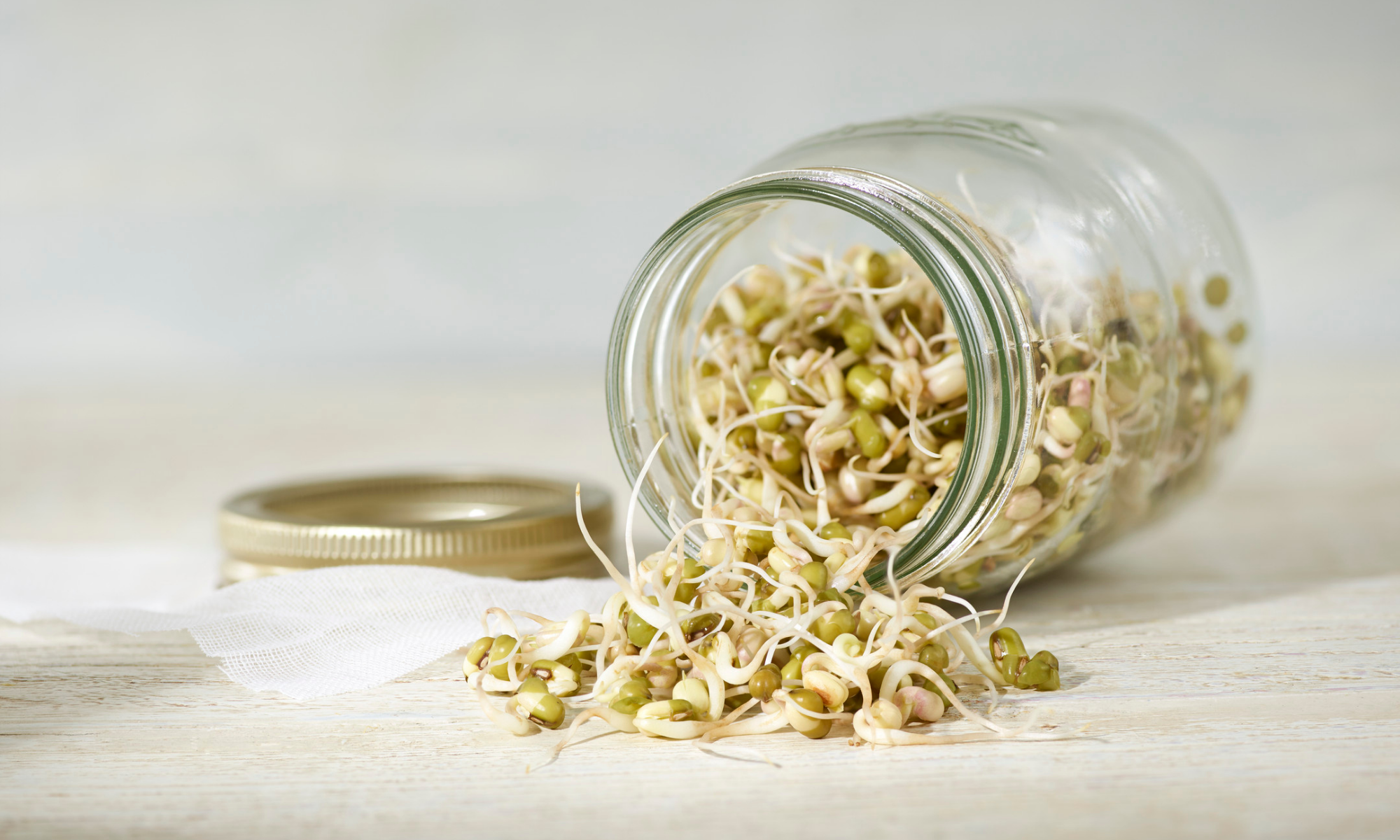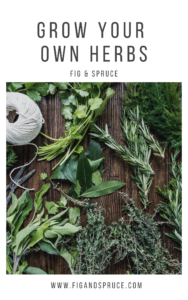If you’re new to gardening, a plant humidifier may not be something you’ve ever heard of or considered. We’re covering the best options for plant humidifiers today and if/when they’re necessary for your indoor plants.
Table of Contents
Do You Need a Plant Humidifier?
In truth, some plants can survive and even thrive without extra humidity. Succulents, for example, thrive in dry conditions with little moisture in the air.
For most other types of house plants adding extra humidity is beneficial to the plant health. Some plants will tolerate dryer conditions, so if you ask if it is absolutely necessary for every type of plant, the answer is no. However most plants would appreciate some extra moisture and some plants really do need the additional help to grow and thrive in an indoor environment.
Especially in the winter months, the air in your home can get particularly dry. Just like this weather is rough on your skin, your plants suffer too! Many popular indoor plants like fiddle leaf figs are tropical plants too, and appreciate as much humidity as they can get.
Types of Plant Humidifiers
There are two main types of plant humidifiers that you can purchase.
Evaporative
The evaporative plant humidifier works probably like you’d expect – it creates humidity by heating water and causing it to evaporate. Evaporative humidifiers can be cheaper than other types, but has a few downfalls. First, its generally noisier. Second, because its heating water you’ll have to be careful not to burn anything from the heat within the unit when changing or refilling.
Evaporative humidifiers also come with filters which helps prevent bacteria and mold, but it is something that you’ll have to change and clean. The frequency that you have to change this filter will be noted on the instructions when you purchase your plant humidifier.
Ultrasonic
An ultrasonic plant humidifier uses high frequency vibration to cause the water to evaporate. These humidifiers tend to be a little more expensive than evaporative plant humidifier. They have no filter to change. They’re generally quieter than other types.
The biggest perk is that unlike evaporative humidifiers, they’re not heating up any water so there’s no risk of burning anything when changing the water.
The Best Plant Humidifiers for Indoor Plants
Our top pick: LACIDOLL Humidifier
| Type: | Ultrasonic |
| Capacity: | 21 L/5.5 Gal |
| Run Time: | 48 hours |
Our number one pick that combines affordability with features is the Lacidoll humidifier. This ultrasonic humidifier has an LED screen that tells you the current room humidity.
There are 4 mist level settings to switch between Low, Medium, High and Turbo output. It also has built-in humidistat accurately detects the humidity in your room and auto adjusts to your preset humidity level from 40% to 90%.
Best Premium Plant Humidifier: Levoit Humidifier
| Type: | Ultrasonic |
| Capacity: | 285-376 sq. ft |
| Run Time: | up to 40 hours |
The Levoit Humidifier is a quiet, sleek humidifier with several key features that make it our premium option. It has a run time of up to 40 hours, so you wont constantly be refiling this machine.
What sets it apart from other models is the smart features. This plant humidifier can connect into Alexa and Google Assistant systems. You can also connect to it via an app and seamlessly monitor moisture levels with ease.
Apart from the smart features, this unit also offers 3 different mist levels, a 360 degree nozzle, and is noted as a super quiet unit by many reviewers on Amazon.
Best Budget Option: Pure Enrichment Mistare
| Type: | Ultrasonic |
| Capacity: | 175 sq. ft. |
| Run Time: | 7-10 hours |
The pure enrichment mistaire humidifier is a good option for those looking for a lower priced unit. It does away with a lot of the bells and whistles of some of the more premium models.
Another downside is the run time is only 7-10 hours. However this humidifier covers up to 175 sq. ft and has 2 different output levels. It also has a nightlight mode option, making it convenient for a bedroom.
Best For Small Spaces: ARPSTAR Mini Humidifier
| Type: | Ultrasonic |
| Capacity: | 320ml |
| Run Time: | 4-8 hours working |
A quiet, space saving design is what sets the Arpstar cool mist humidifier apart from other models. It’s similar to the budget option listed above, but has slightly more sq. foot coverage. Its great for small spaces where you don’t want to devote an entire area to a humidifier. The design is also sleek enough to blend in to other modern aesthetics without looking like a sore thumb in the room.
You’re still giving up some of the bells and whistles comparing this model to premium versions, but if space is your top priority this model is a good option.
Best Large Capacity: Elec Homes Humidifier
| Type: | Ultrasonic |
| Capacity: | 755 square ft. |
| Run Time: | 12 – 40 hours |
If you’ve got a large room that you want to add humidity to, the elec homes is a good option to consider. This unit covers up to 755 square feet. It also has a sleep mode, and is noted as a quiet unit by many reviewers on Amazon. It has 3 levels of output and comes with a remote control for an easy settings change.
What to Consider
Run Time
You’ll want to ensure you select a humidifier that has at least a 12 hour run time, meaning it can run for 12 hours without needing to be refilled. A 24 hour run time would be even better, which would mean you’ll only need to refill the humidifier once per day. The more often you need to refill, the more hassle the process is. Minimizing this step will keep it easy and low maintenance to keep up.
Proper placement
Contrary to what you might think, you actually don’t want your humidifier directly next to any of your plants. You want the humidifier to raise the overall humidity levels in the air, not to spray water directly on plants. We recommend placing your plant humidifier at least 6 feet away from your plants.
Size of Room
The size of the room you want to place your humidifier in is something to consider. When evaluating different plant humidifiers most pages will quote the square footage that the unit is effective for. Think of this as a radius around the unit that it will be effective for.
Its ok to place it in a room that is larger than the capacity (for plant purposes), but you dont want to place the humidifier on the other side of a large room when its capacity is only 200 square feet.
Humidifier maintenance and cleaning
The frequency of which you’ll have to clean your humidifier will vary depending on if you put filtered water or tap water in your humidifier. Either is totally fine to use, but filtered will likely build up bacteria quicker than filtered water will.
At a minimum we recommend planning to clean your plant humidifier at least once a week. However, you may need to do it more frequently and its best to monitor for the first few weeks after your initial setup.
Other ways to Raise Plant Humidity
There are several other ways to raise humidity for your plants. They may not be quite as efficient, but if your plant only needs a slight change in humidity they might do the trick.
Place your Plant within another planter
Especially if you’re using porous planters like terracotta, you can raise the humidity by placing your planter within another planter. Next, fill the empty space with moss and water the moss. This will keep moisture around the outside of the planter and raise the humidity for the plant inside.
Place plants on a bed of gravel/water mix
Fill a container with small pebbles or gravel. Fill this container just below the tops of the pebbles with water, then place your plant on top of the bed of gravel. This will passively pull water up into the plant. This will slightly raise the humidity, but will not drastically change the humidity levels. if you need a drastic change, a plant humidifier is a better method.
Want to read more about indoor plant and container gardening tips? Check out our container gardening section of the blog!









